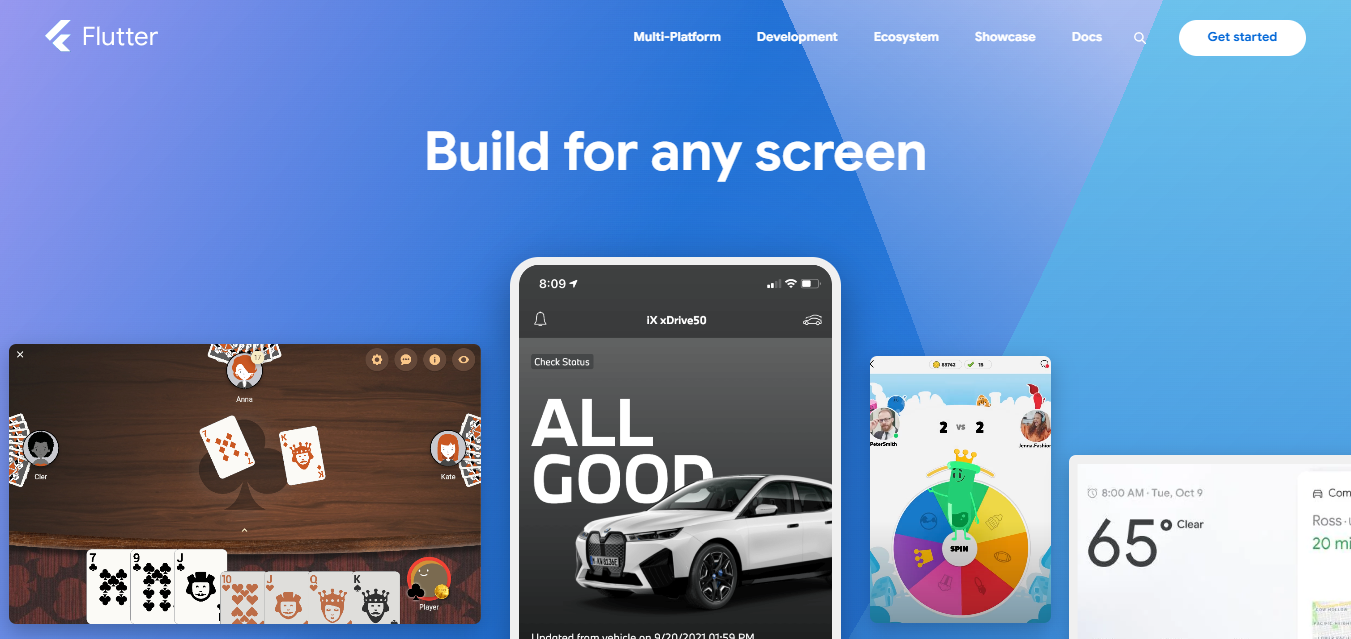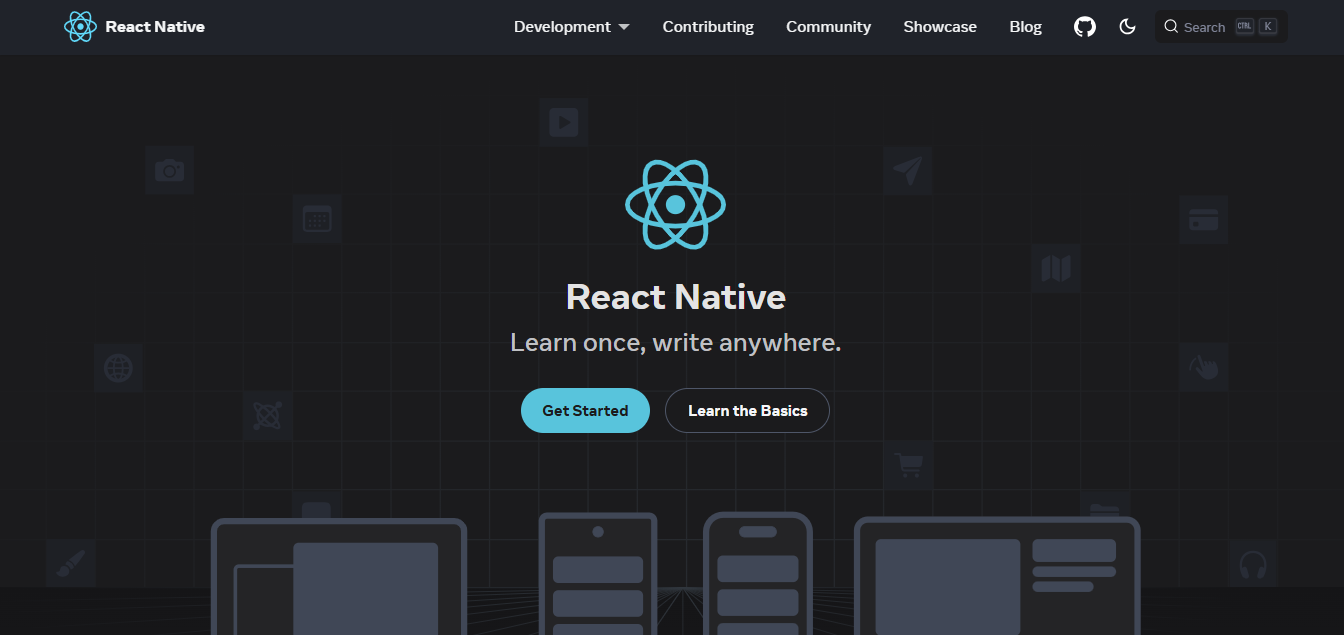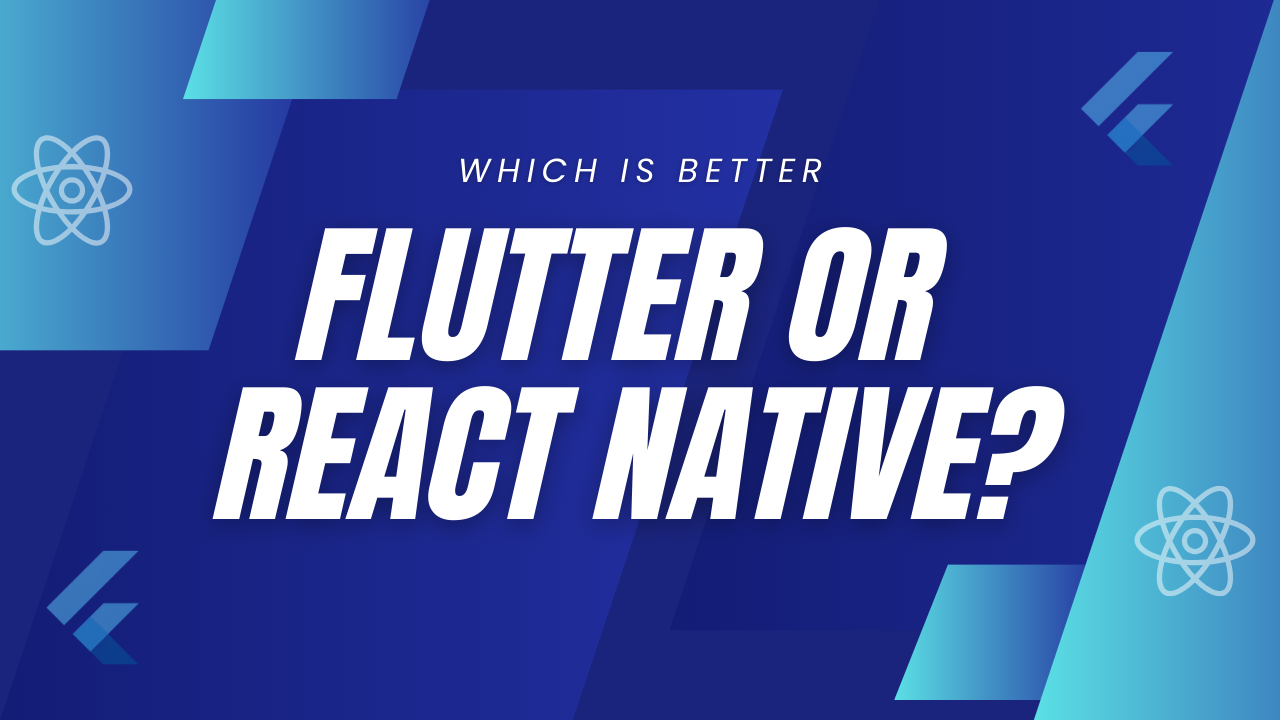If you've been keeping up with app development, you've probably heard about the ongoing debate between Flutter and React Native. As more businesses want to save money by building apps that work on both iPhone and Android, picking the right framework becomes super important.
I've worked with both tools over the years and seen their strengths firsthand. React Native developers love using their JavaScript skills and the helpful community resources, while Flutter developers create beautiful interfaces that work smoothly across devices. Let's look at what each offers in 2025 to help you choose the right one for your next app.
Flutter in 2025

(Image Source: Flutter)
Flutter has completely changed how we build cross-platform apps. It lets developers create consistent, powerful applications that look and work great on any device. The secret is its widget-based design approach and the Dart programming language, which turns your code directly into native code without any slow middle layers.
For developers who care about speed and beautiful designs, Flutter is hard to beat. You can create custom interfaces with its wide range of widgets, and the "hot reload" feature lets you see changes instantly while you're working. That's why many forward-thinking companies now choose Flutter for their modern apps.
Why Flutter is popular:
Rich UI customization capabilities
Consistently smooth performance
Single codebase for all platforms
Benefits of Flutter app development
Flutter makes app development more efficient in several ways. The single codebase approach means you write code once and it works everywhere, saving tons of time compared to building separate apps. The extensive widget library gives developers ready-made components for almost any interface element needed.
Another big advantage is Flutter's performance. Because it compiles to native code without JavaScript bridges, apps run faster and smoother, especially when handling animations or complex visuals. The fast development cycle with hot reload means teams can test ideas and fix bugs in real-time, dramatically speeding up the development process.
React Native in 2025

(Image Source: React Native)
React Native continues to be a powerful choice for cross-platform development. Its main strength is combining the simplicity of JavaScript with native-level performance. This approach lets developers reuse components across iPhone and Android, cutting costs while maintaining quality.
What makes React Native special is its massive ecosystem of tools and plugins. Developers can find ready-made solutions for almost any feature they need to build, from payment processing to complex animations. Its strong integration with backend services also makes it perfect for data-heavy applications.
React Native's strengths:
Massive, supportive developer community
Authentic native-like experience
Exceptional flexibility
Benefits of React Native
Cross-platform development with React Native offers several advantages for businesses. The most obvious is cost savings - instead of having separate teams for iOS and Android, one team can build both versions simultaneously. This not only saves money but also ensures feature parity across platforms.
React Native's "learn once, write anywhere" approach means web developers can quickly apply their JavaScript knowledge to mobile development. This wider talent pool makes it easier to find qualified developers. The framework also enables faster deployment cycles, helping businesses respond quickly to market changes and user feedback.
Head-to-Head Comparison
When comparing these frameworks directly, several factors come into play. Each has its own strengths that might make it the right choice depending on your project needs.
Performance comparison
In terms of pure speed, Flutter usually performs better than React Native. Apps built with Flutter load faster and handle transitions more smoothly, especially in graphics-heavy apps like games or animation-rich interfaces.
React Native has improved significantly with its newer Fabric rendering engine, which helps close the performance gap. It now delivers nearly native experiences in most cases. However, Flutter still takes the lead for visually demanding applications where every millisecond of performance matters.
Developer experience in focus
Flutter provides a very user-friendly development environment that many find easier to learn. Its consistent architecture reduces the learning curve, making it great for developers new to mobile app development who want to get up to speed quickly.
React Native feels natural to anyone with JavaScript experience, particularly those familiar with React for web development. Teams with existing JavaScript skills can leverage what they already know, helping them build mobile apps faster without learning a completely new language.
Trends shaping Flutter VS React Native in 2025
The mobile app landscape continues to evolve, and both frameworks are adapting to meet new challenges and opportunities.
Flutter's future
By 2025, Flutter has strengthened its position as a go-to option for modern app development. Companies increasingly choose Flutter to create visually stunning apps that perform exceptionally well on all devices. The single codebase approach significantly cuts development time and costs while ensuring consistent functionality across platforms.
Flutter's growing ecosystem now includes robust tools for incorporating cutting-edge technologies like machine learning and augmented reality. Support for TensorFlow Lite, ARCore, and ARKit allows developers to build immersive, AI-driven applications tailored to specific business needs. The declarative UI approach makes creating dynamic and responsive designs easier, while the fast reload capability speeds up the testing and refinement process.
React Native's evolution
React Native thrives on flexibility, making it an excellent choice for many types of modern apps. Its open-source foundation, supported by a vibrant developer community, ensures compatibility with new technologies and drives ongoing improvement. React Native developers benefit from smooth integration with cloud platforms, APIs, and backend systems, making it ideal for enterprise applications requiring data security, scalability, and strong performance.
The framework's ability to share code across platforms while maintaining native-like performance dramatically reduces development time and costs. Features like hot reloading make building and debugging easier, speeding up development cycles. Additionally, its large library of pre-built components, third-party plugins, and support for advanced tools like Redux and TypeScript allows developers to create efficient, feature-rich applications tailored to specific business requirements.
Choosing the right framework
With a clear understanding of both frameworks, let's look at which situations call for each option.
When to choose Flutter
Consider Flutter if your project requires:
UI-Intensive Applications: If your app needs beautiful, engaging user interfaces with smooth animations, Flutter is a great choice. Its extensive collection of customizable widgets allows developers to create pixel-perfect designs that enhance user experience. The powerful rendering engine ensures your app looks and feels the same on all devices, making it perfect for brands where visual impact matters.
Quick Prototyping: Flutter's "hot reload" feature is perfect for rapid prototyping, letting developers see changes instantly. This helps teams quickly test new ideas, refine interfaces, and improve functionality without long waiting periods. This faster development cycle helps companies launch products sooner in today's competitive market.
Cost-effectiveness: Flutter enables businesses to build high-quality apps for both iOS and Android using just one codebase. This means you don't need separate teams for each platform, saving significant money. By maintaining just one set of code, businesses reduce ongoing maintenance costs and can update both platforms simultaneously.
When to choose React Native
Choose React Native when your project demands:
Complex Integrations: React Native shines when dealing with complex integrations that require real-time data synchronization or sophisticated backend processes. Applications involving payment systems, device hardware features, or complex media handling work particularly well with React Native due to its seamless integration with native modules and APIs.
Existing JavaScript Expertise: If your team already knows JavaScript well, React Native lets you use those skills for mobile development. This reduces training time and helps developers work more efficiently across both web and mobile platforms. This shared knowledge base also improves collaboration between web and mobile development teams.
Community-Driven Solutions: The large React Native community offers countless open-source tools, libraries, and resources that make solving development challenges easier. This robust ecosystem ensures developers have access to continuous updates and improvements, helping maintain a fast and efficient app development process.
Conclusion
As app development reaches new heights in 2025, both Flutter and React Native continue to improve and compete for developers' attention. People who value smooth performance, cutting-edge designs, and unified development across platforms often prefer Flutter. Meanwhile, React Native appeals to those who appreciate accessibility, flexibility, and the extensive ecosystem of community-created solutions. In the end, your choice depends on what your specific project needs – whether that's getting to market quickly, integrating with complex backend systems, or creating standout user interfaces. By understanding current trends and leveraging each framework's strengths, you can build amazing apps that stand out in today's crowded app stores.



